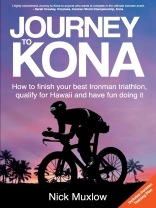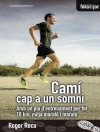Have you ever wanted to live the Ironman dream of qualifying for the Hawaii Ironman – and completing it?
But what will it take to improve your Ironman training and racing so you achieve the result you want and make this a reality?
The biggest challenge Ironman athletes face is not their lack of motivation or determination. They face three key problems:
Journey to Kona will teach you how to successfully prepare and train for your next Ironman triathlon, including:
- How to implement specific Ironman training principles to improve your Ironman triathlon fitness.
- How the different elements of Ironman triathlon – training, pacing, nutrition, tapering and more – apply to you.
- How ot invest your time well and get the best training results.
- How to plan, prepare for and race your best Ironman triathlon.
- How to have more fun swimming, biking and running!
By the end of Journey to Kona, you will have unlocked an unwavering belief in yourself. You will have confidence that your training is going to improve and your racing is going to improve, and you will hit the start line confident that you are going to finish your best Ironman triathlon.
Spis treści
Foreword Preface Introduction
Part 1 – Fitness Fundamentals
- Chapter 1: Mental Fitness
- Chapter 2: Physical Fitness
- Chapter 3: The 'I’ In Fitt
- Chapter 4: Fitness Testing
- Chapter 5: Feeding Your Fitness
Part 2 – Training Techniques
- Chapter 6: Training Sets
- Chapter 7: Ironman Techniques
- Chapter 8: Pacing
Part 3 – Perfect Preparation
- Chapter 9: Gather Your Team
- Chapter 10: Understand Planning
- Chapter 11: Build And Adapt Your Plan
- Chapter 12: Tapering
- Chapter 13: Ironman Race Day And Beyond
Conclusion
Appendices
Acknowledgements
A Final Word
Thank You
O autorze
Nick Muxlow is an Australian-based traithlon and running coach who loves to inspire, educate and help people achieve the dreams they never thought possible. Nick has competed in seven Ironman races, one of these being the Ironman World Championships in Hawaii, and has an Ironman PB of 9 hours and 10 minutes. He believes it is important not only to teach the athlete what they are doing, but for them to know why they are doing it.












